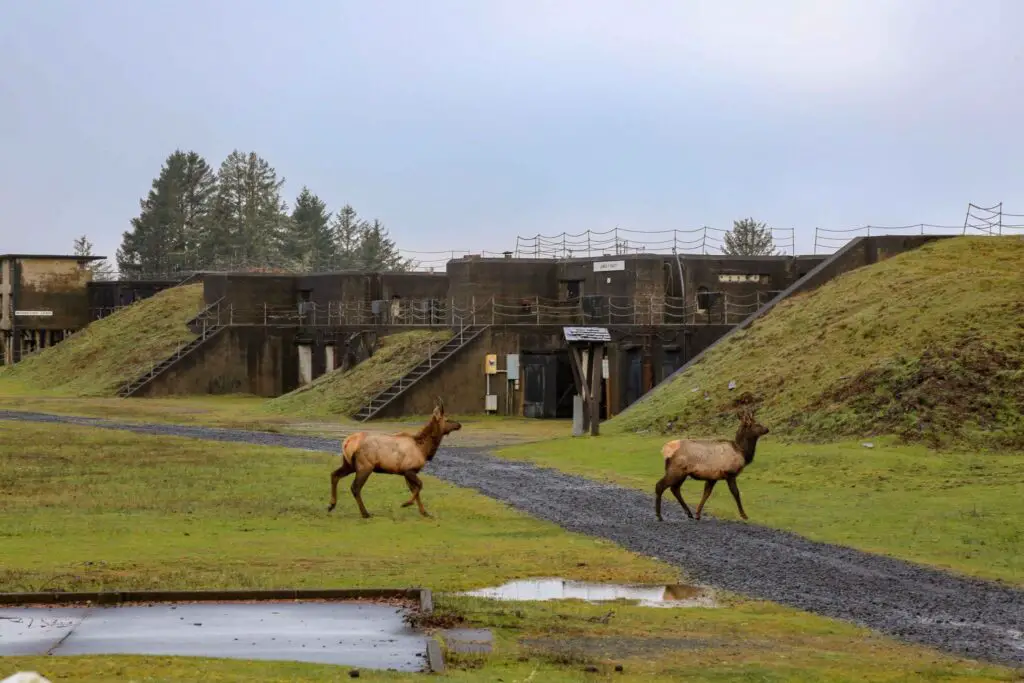Abandoned on Rhode Island’s shores, behind overgrown trees, often overlooked, or just plain forgotten, sits Fort Wetherill in Jamestown. Once a proud active fort, Fort Wetherill’s many tunnels and structures are now covered in multicolored graffiti.
Fort Wetherill Jamestown’s History
In 1855, President Grover appointed the Endicott Board. Made up of members of the Army, Navy, and civilians, it was tasked with determining if the coastal defenses of the United States, and more specifically, New England, were up to snuff. Their findings were not good. This discovery brought about the Endicott Period, a time of many coastal fortifications across the country. Fort Wetherill was constructed in this timeline on the site of former Fort Dumpling.
Forts built in this period are generally concrete structures and tall walls with large rifled canons mounted on the newest technology of disappearing carriages so the rifles could be raised and lowered above the walls as needed.
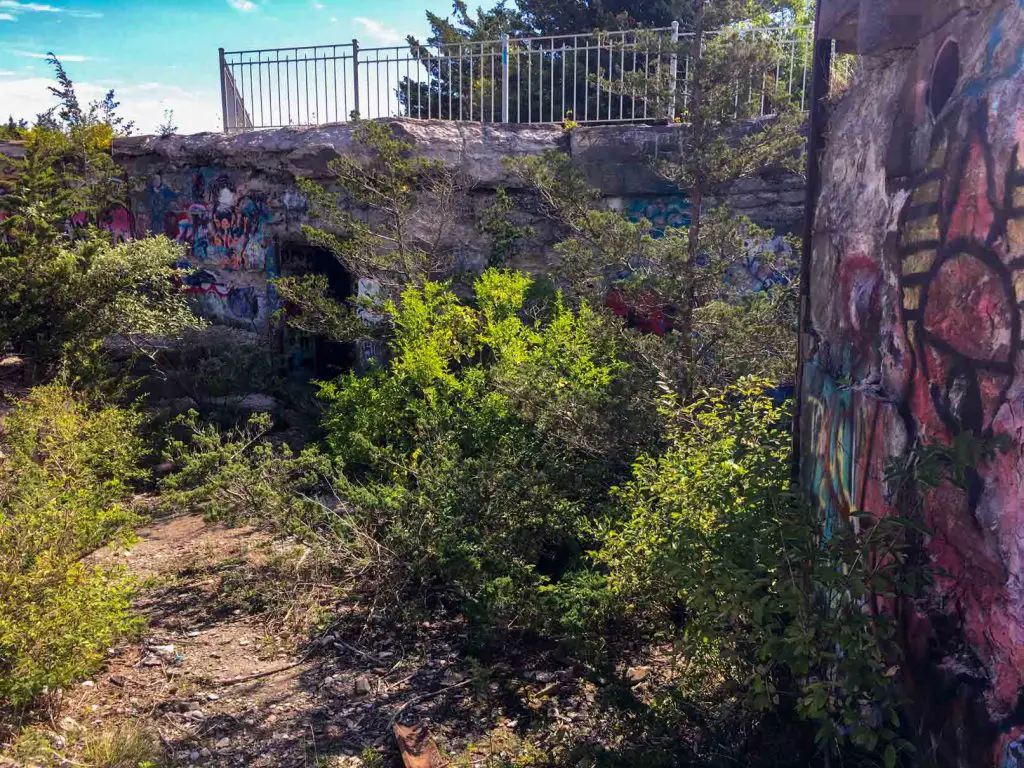
Fort Wetherill in Jamestown was built in the middle of this period, and sure fits the mold. Purchased in 1899, and with all 7 pre- WW2 batteries finished in 1910, Fort Wetherill became the longest gun line defense in all of New England.
During World War I, Fort Wetherill stationed five companies of the Rhode Island National Guard, but no action was seen by the fort. Shortly after the war. the fort was reduced to caretaker status with only one person remaining on the site.
By the 1940’s Fort Wetherill was needed once again, but this time for World War 2. New housing was constructed for 1,200 soldiers, and the fort soon became a training center. In 1943, new forts were constructed in the area, making the long guns of Fort Wetherill obsolete, so in turn, they were scrapped.
By the time the war ended, Fort Wetherill was decommissioned and abandoned. Nearly 26 years later, the state of Rhode Island acquired the land that housed the abandoned fort. The site is now used as a public state park, with many residents and travelers blissfully unaware of the abandoned structures hiding in the dense trees behind the more manicured portions of the park.
Fort Wetherill’s Present
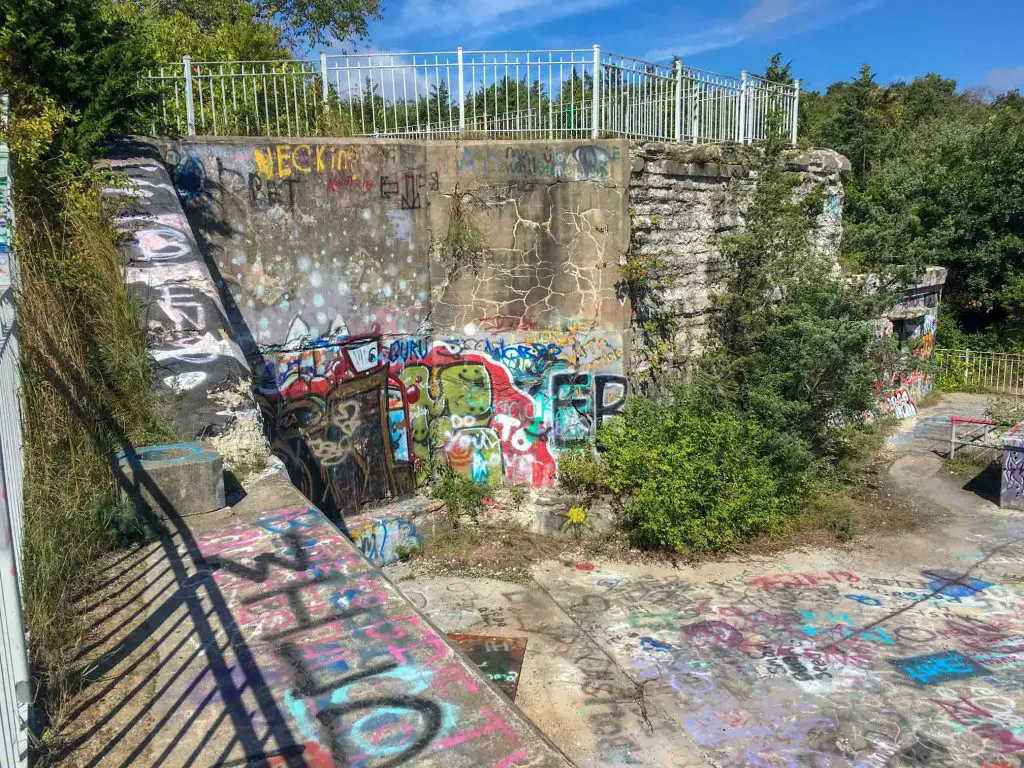
We began our journey to the secret tunnels of Fort Wetherill Jamestown with an anxious panting golden retriever dragging us through the wrong paths. We knew the fort was located in the back of the park along a worn-down dirt trail, and I half expected to encounter others along the short walk.
The park itself was bustling, people walking dogs, joggers exercising in the warm weather, and people reading at picnic tables. But back in the woods, no one was to be found.
We quickly came upon a large concrete staircase, leading to the top of the fort. Nearly every surface, whether vertical or horizontal, was covered in bright graffiti. I ran to the top with the dog in tow while other members of our group branched out in different directions. After we spent several minutes yelling at the others to come see what we had found, we figured this adventure would go much smoother if we tackled it together.
From here, we all grouped at the bottom of the main stairs and maneuvered to the top where the massive blanket of graffiti occasionally gave way to ocean views. However, these were few and far between due to the dense summer foliage. Thankfully, this route along the top battlement offered additional views, such as the one we received by looking downward into the large open areas of the fort where the long guns had been mounted and manned.
Concrete flaking doorways on either side of each long gun mount contained stairs leading into the bowels of the establishment, shrouded in darkness. We just had to get in there. After walking along one whole side of the top of the fort, we found a fence that was low enough to climb over.
The fences are there for guest safety, and it is not recommended to climb over, but we were too excited to stop and think about this reality during our adventure. (oops.) The fence climbing on the side of the hill brought us to the mid-level of the fort and up close and personal to the long gun mount areas. They were all perfect circles with large metal tie rings where the guns were secured to stop recoil.
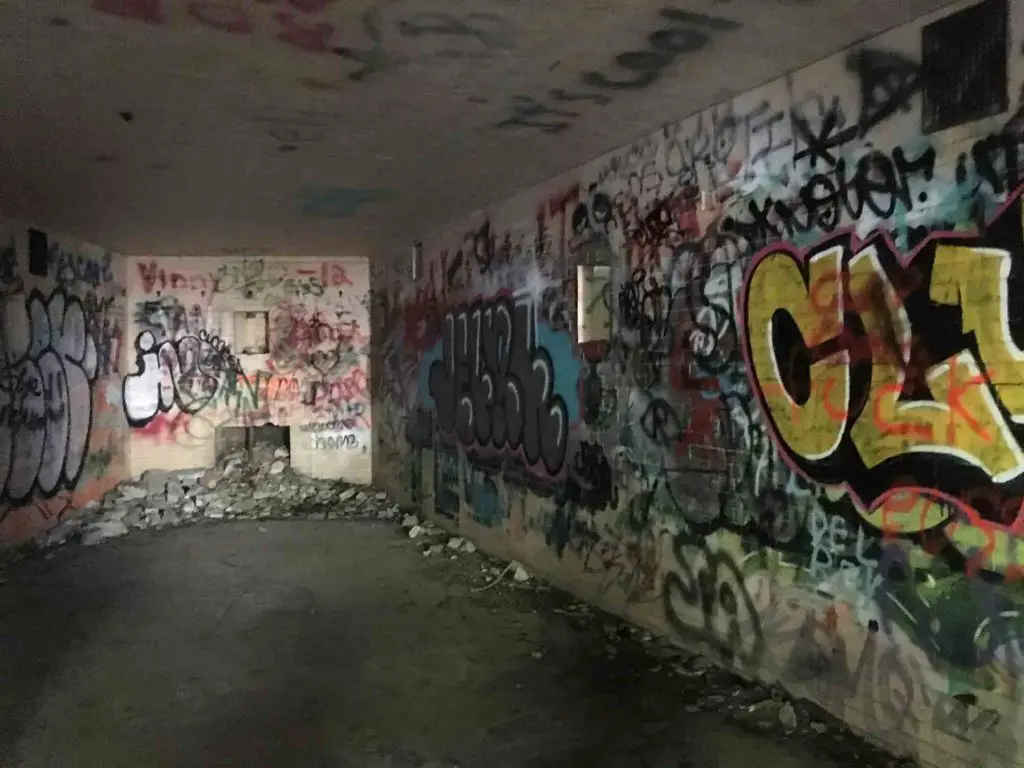
It did not take long, and we were inside the tunnels within the depths of the fort. Down here we saw tracks on the ceiling where ammunition for the canons were stored and moved. Each section we saw was more fascinating than the rest.
Each cavern we entered was almost identical in design to the one before it, all covered in graffiti in varying degrees of appropriateness. The ammunition storage areas differed in their intactness.
Some were pristine, (minus the graffiti,) others had concrete flaking or whole chunks missing. Some had perfect tracks on the ceiling with minimal rust, others had rusted tracks hanging precariously that we had to maneuver around.
After we were satisfied with this half of the exploration, we moved back to the top to access the left side of the fort. While this side is much smaller, it is much more diverse and interesting. This section of Fort Wetherill, is built almost like a daylight basement, with part of the fort having deep dark tunnels, and the rest being on top of the hill.
The bottom tunnels had floors coming up and very narrow tunnels that only the dog could fit through (but wouldn’t.) Here we had no hope of seeing anything without a flashlight. We tried to deduce what these tunnels and dark rooms were used for but could not understand the rhyme or reason of the room designs.
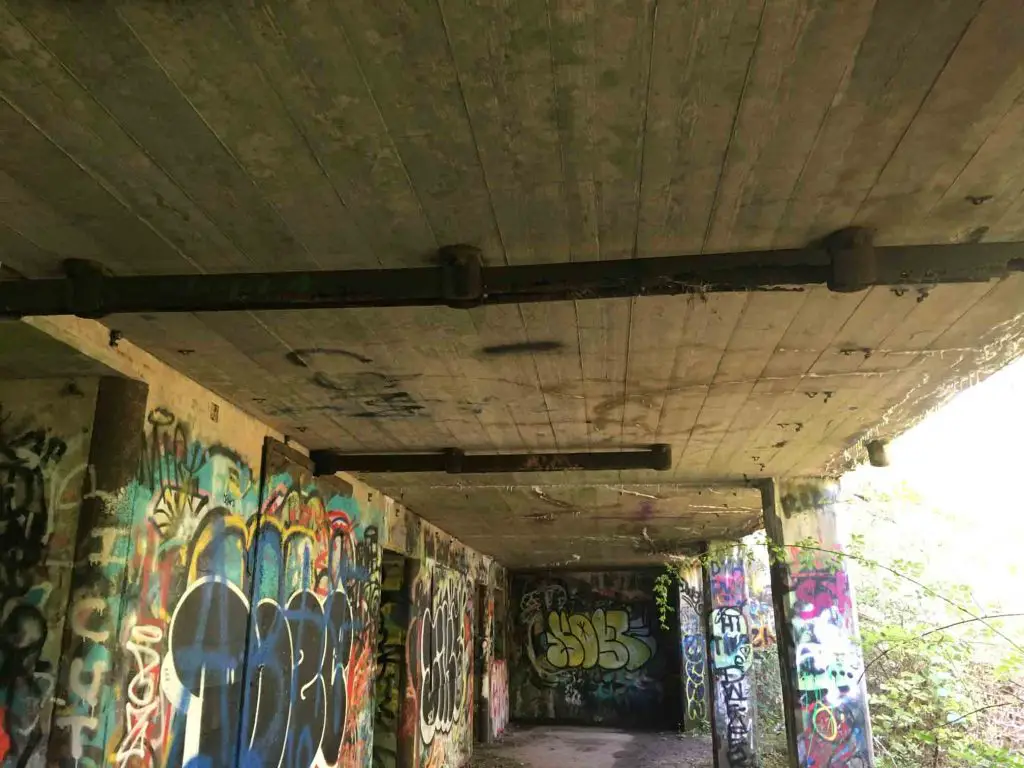
Heading up to the top we had to climb steep, overgrown concrete stairs. Here, the concrete flattens to the lay of the land and large concrete structures are sitting on top. After exploring them a bit, we concluded they were some ammunition storage areas, as well as lookout buildings. This is the side of the fort that has the best ocean views and is the hardest to ascertain the past usage.
After we had finished exploring and had returned home, we learned there was another more accessible, more intact part of Fort Wetherill. Specifically, the mine storehouse with the original tram tracks for moving mines. The mines stored here were used to protect the area during the world wars from submarine attacks on the shore.
Fort Wetherill Jamestown’s Future
Although Fort Wetherill in Jamestown is on the National Register of Historic Places, that does not seem to be helping maintain the historic structure. The battery buildings have all been partially buried at this point in hopes of keeping visitors safe. But in doing so, so much of the history has been destroyed or damaged.
Concrete chunks are flaking off the structure, and with each piece the fort loses, we lose a piece of history. We can only hope that someday the state of Rhode Island, or a non-profit group (maybe Friends of Fort Wetherill?) will see the value in repairing Fort Wetherill’s tunnels and fort structures.
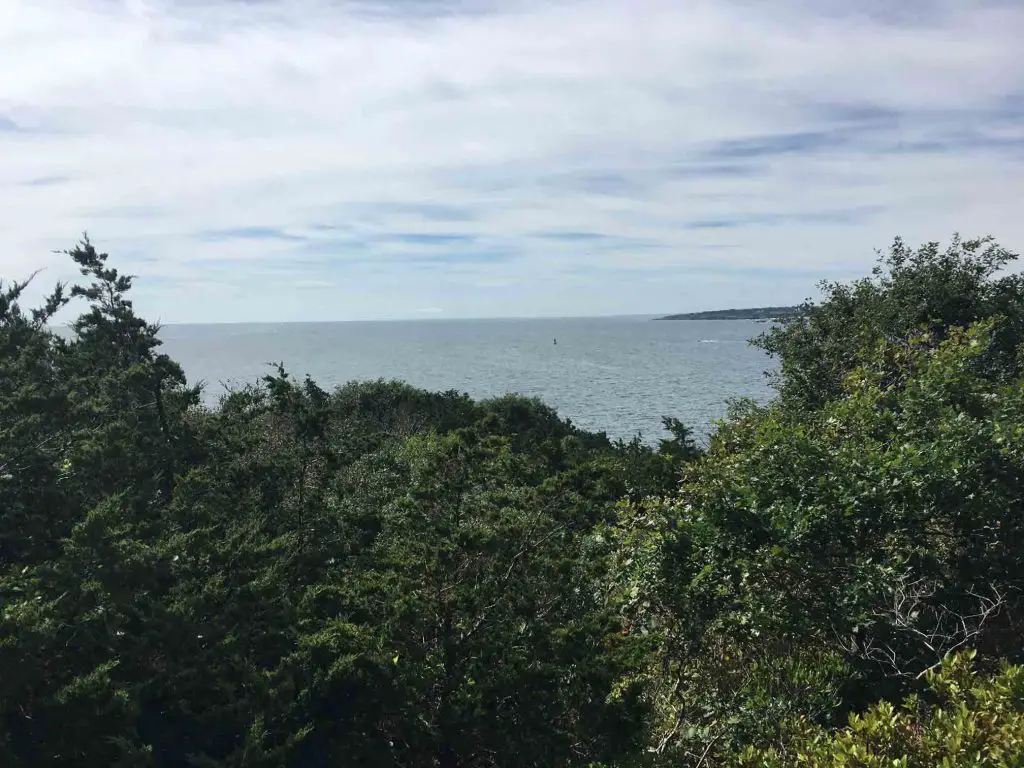
This is something the state of Oregon is working hard to do. Fort Stevens in Astoria is the perfect model for Rhode Island to follow for Fort Wetherill Jamestown. Fort Stevens is maintained and open daily to the public with a small museum and knowledgeable volunteers. Detailed and informative tours are even offered there during the busier times of year.
Our hope is that someday Fort Wetherill will be restored to its original glory for future generations to come and observe a piece of Rhode Island’s history. Unfortunately, this decision needs to be made quickly before Fort Wetherill runs out of time against the relentless coastal weather.
More to Do at Fort Wetherill Jamestown
Looking to make a day of your trip to Fort Wetherill Jamestown? The park has much to offer once you have satisfied your urban exploring urge.
Fort Wetherill State Park covers over 60 acres of land, all available to the public for various activities. The park is a popular place to watch the tall ship races, as well as scuba dive. Many dive clubs use this facility regularly.
Fort Wetherill Jamestown State park has a public boat ramp, so visitors can boat, fish, and dive here. Landside activities include hiking, picnicking, and biking.
The park is dog friendly, has free parking, and has restrooms opened seasonally.

